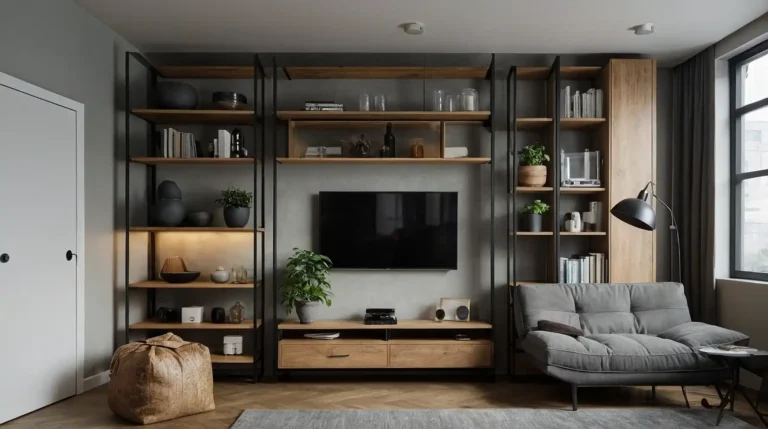35 Breathtaking Solar-punk House Ideas for a Sustainable Future
Solar-punk architecture reimagines our living spaces as harmonious extensions of nature, combining renewable technology with lush greenery and community-oriented design.
This optimistic vision offers a pathway to homes that nurture both people and planet.
Unlike conventional architecture that often separates us from nature, solar-punk integrates ecological systems directly into our built environments.
These designs celebrate technology not as domination over nature, but as a tool for regeneration.
Ready to explore how your home could become part of this hopeful future?
These 35 solar-punk house ideas showcase innovative approaches to creating dwellings that generate more than they consume while fostering both ecological and social connections.
1: Living Green Roofs
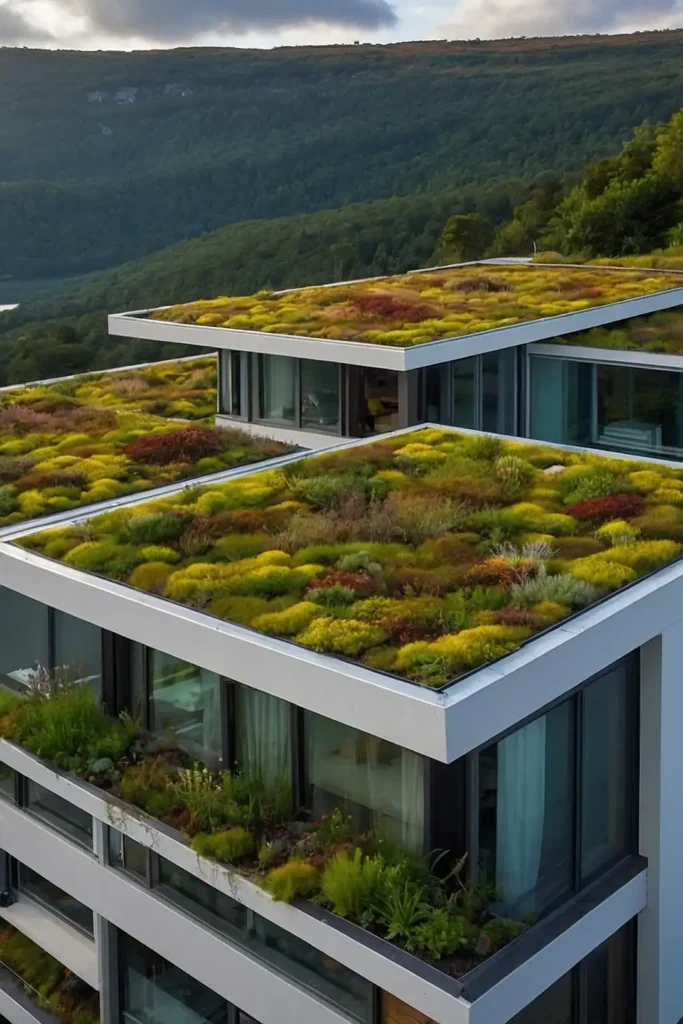
Transform your rooftop into a flourishing garden that insulates your home and supports local biodiversity.
These planted surfaces capture rainwater while reducing heat island effects in urban areas.
Choose native plants that require minimal maintenance and support local pollinators.
The soil layer provides natural temperature regulation, keeping your home cooler in summer and warmer in winter.
This functional ecosystem reduces your energy needs while creating habitat for displaced wildlife.
2: Transparent Solar Windows
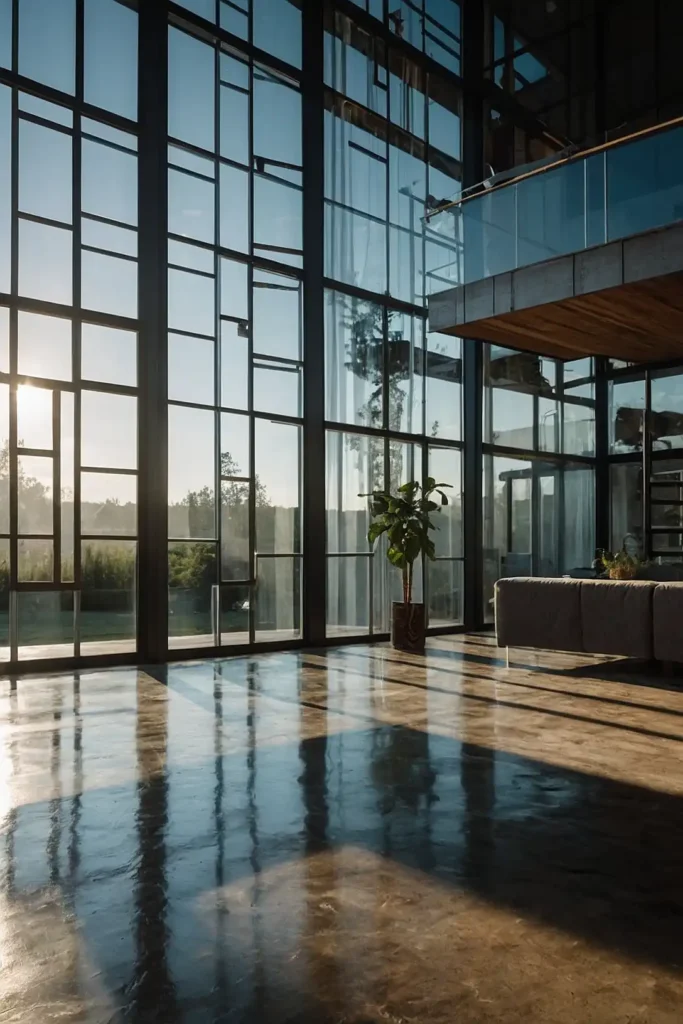
Replace conventional windows with transparent solar glass that generates electricity while allowing natural light to enter your home.
These innovative panels transform previously passive surfaces into power generators.
The photovoltaic technology is embedded directly within the glass, eliminating the need for separate solar panels.
The subtle tinting reduces glare and heat gain without sacrificing views or daylight.
This seamless integration of renewable energy maintains aesthetic appeal while maximizing energy production.
3: Vertical Hydroponic Gardens
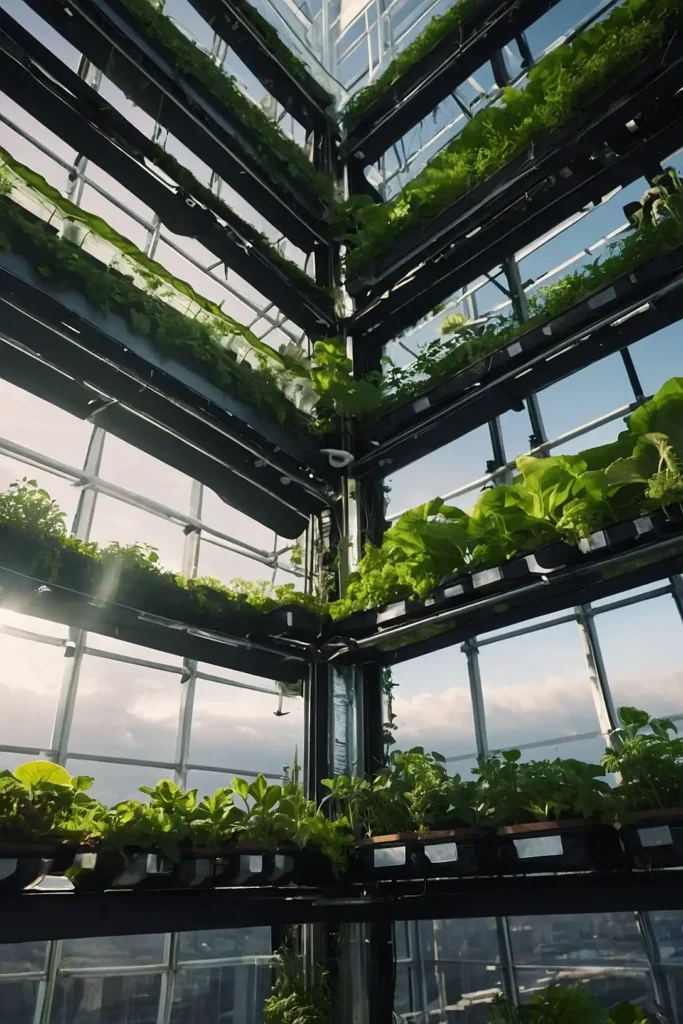
Install wall-mounted hydroponic systems that grow food year-round using minimal water and space.
These living walls transform blank surfaces into productive growing areas.
Circulate nutrient-rich water through tiered growing channels for maximum efficiency.
The vertical orientation multiplies your growing space while creating stunning visual impact with cascading plants.
This productive system brings agriculture directly into your home regardless of yard size.
4: Rainwater Harvesting Networks

Capture precipitation with an integrated collection system that filters rainwater for multiple household uses.
Route downspouts into underground cisterns that store water for dry periods.
Use smart filtration systems to purify water according to its intended purpose.
The collected water can supply toilets, laundry, irrigation, and even drinking water with appropriate treatment.
This cyclical system mimics natural hydrology while reducing demands on municipal water.
5: Passive Solar Design

Orient your home and window placement to maximize winter sun exposure while minimizing summer heat gain.
This fundamental approach harnesses natural energy without mechanical systems.
Incorporate thermal mass elements like concrete floors or water barrels that absorb and slowly release heat.
Design roof overhangs precisely calculated to shade windows during summer while allowing lower winter sunlight to penetrate.
This architectural approach drastically reduces heating and cooling needs through simple geometry.
6: Mycelium Insulation

Insulate your walls with mycelium-based materials grown from fungal networks and agricultural waste.
This compostable alternative to synthetic insulation offers excellent thermal and acoustic properties.
The living material grows into any shape before being dried to create lightweight, fire-resistant panels.
The natural composition contains no harmful chemicals and can return to the earth at the end of its lifecycle.
This regenerative material transforms waste into a high-performing building component.
7: Algae Bioreactor Façades
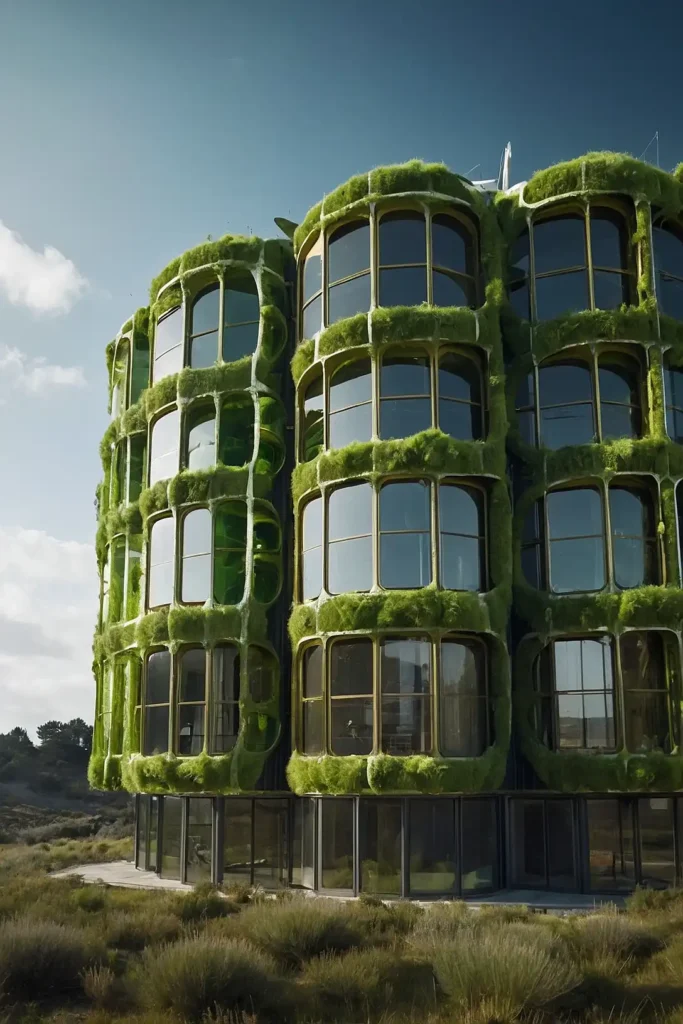
Install transparent tubes filled with algae along sun-exposed exterior walls to generate biomass and capture carbon.
These living systems produce energy while improving your home’s thermal performance.
The algae consume carbon dioxide and produce oxygen through photosynthesis.
The biological process creates heat and biomass that can be harvested for energy or fertilizer.
This multifunctional façade demonstrates visible climate action in an aesthetically striking feature.
8: Community Food Forests
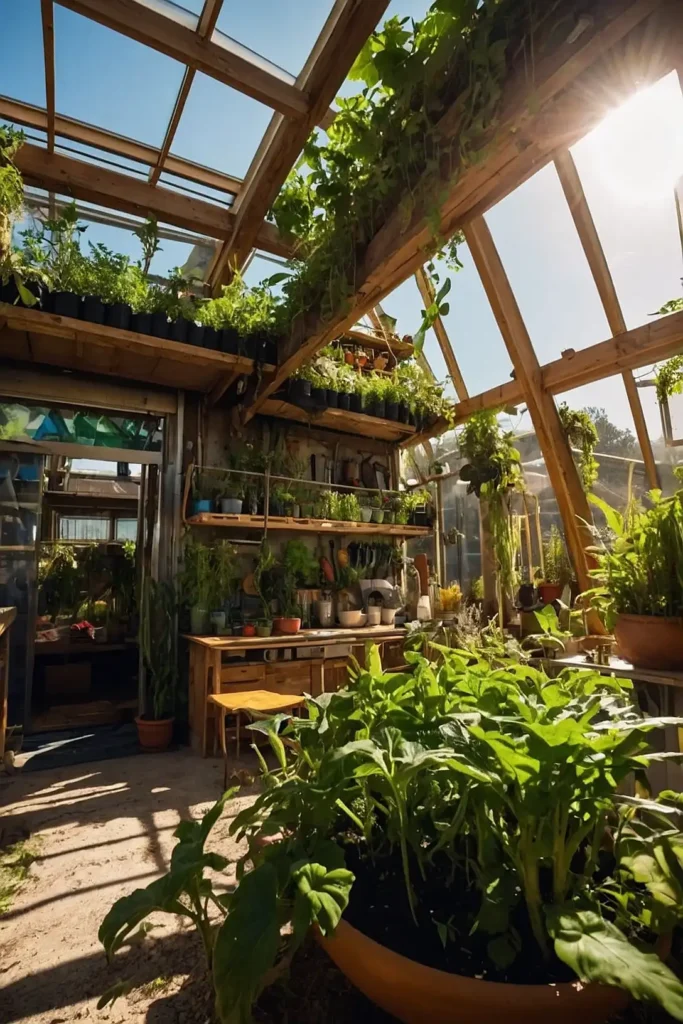
Replace conventional landscaping with edible ecosystems that mimic forest structures while producing abundant food.
These multi-layered plantings include trees, shrubs, herbs, and ground covers that work together.
Design with complementary species that support each other’s growth and pest resistance.
The diverse ecosystem builds soil health while providing year-round harvests of different foods.
This productive landscape transforms resource-consuming yards into regenerative food systems.
9: Natural Swimming Pools
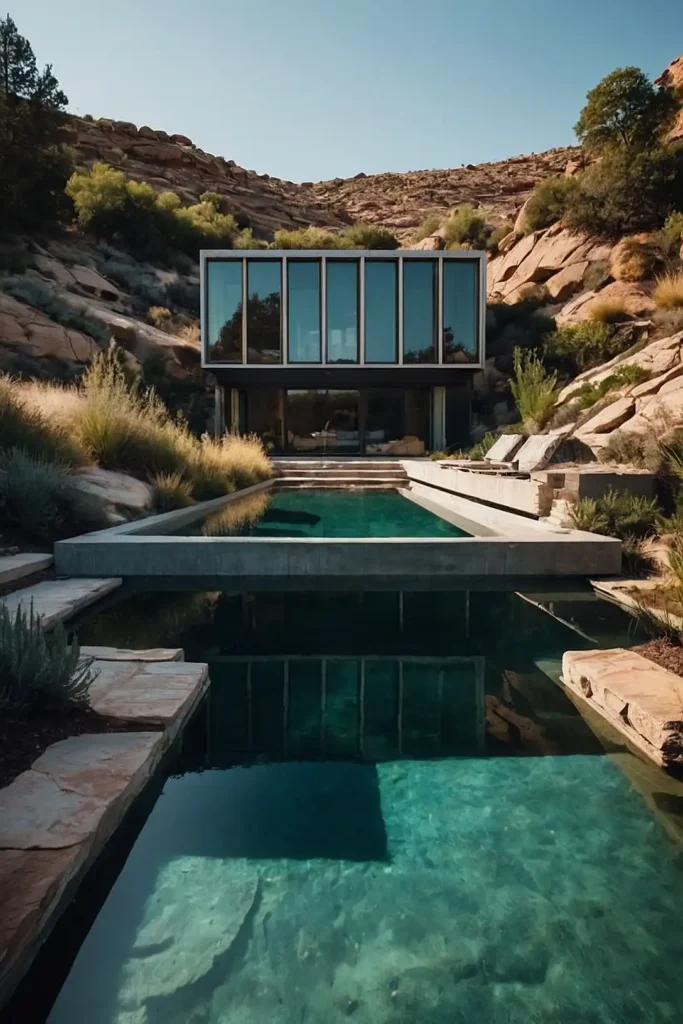
Create chemical-free water features that use plants and beneficial bacteria to maintain clean swimming water.
These living pools blend seamlessly with surrounding landscapes while providing recreation.
Separate swimming areas from planted regeneration zones that filter the water naturally.
The balanced aquatic ecosystem eliminates the need for chlorine or other harmful chemicals.
This harmonious water feature provides habitat for beneficial organisms while offering sustainable recreation.
10: Hempcrete Construction

Build walls using a bio-composite material made from hemp herds, lime, and water with exceptional thermal and carbon-sequestering properties.
This sustainable alternative to concrete creates breathable, insulating walls.
The material continues to absorb carbon dioxide throughout its lifetime, improving with age.
The lightweight mixture reduces structural requirements while providing excellent fire resistance and humidity regulation.
This regenerative building material transforms an agricultural product into long-term carbon storage.
11: Communal Courtyard Centers
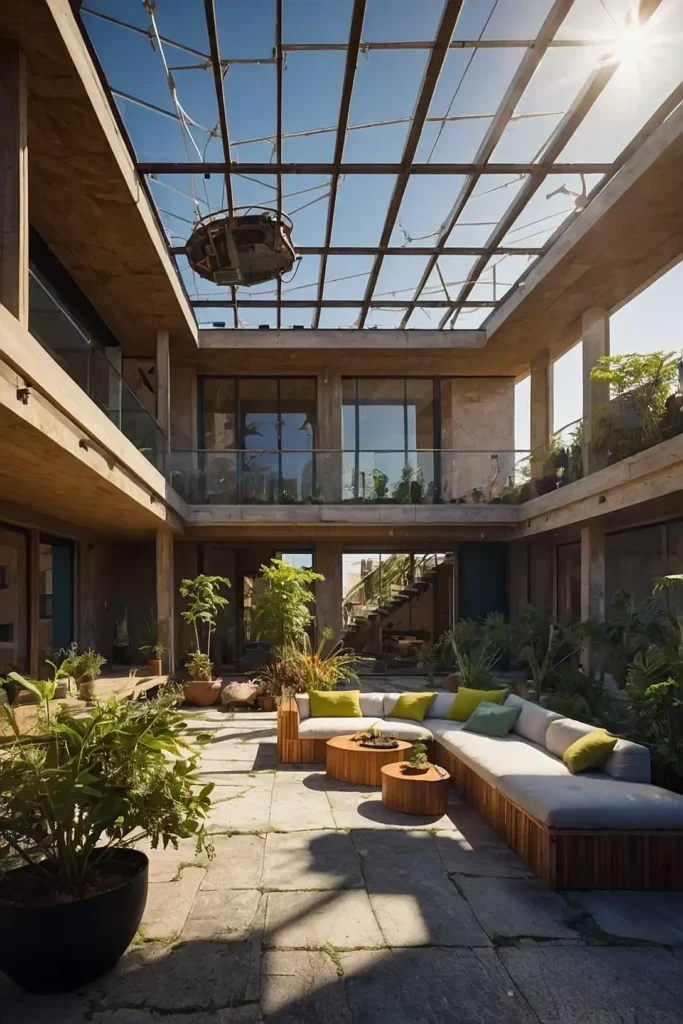
Design housing clusters around shared central spaces that foster community interaction and resource sharing.
These semi-private areas create social bonds while preserving individual privacy.
Include communal features like outdoor kitchens, play areas, and gathering spaces.
The shared zones reduce the need for duplicate amenities in each home while encouraging regular neighbor interaction.
This intentional design nurtures community resilience through physical spaces that facilitate connection.
12: Advanced Greywater Systems
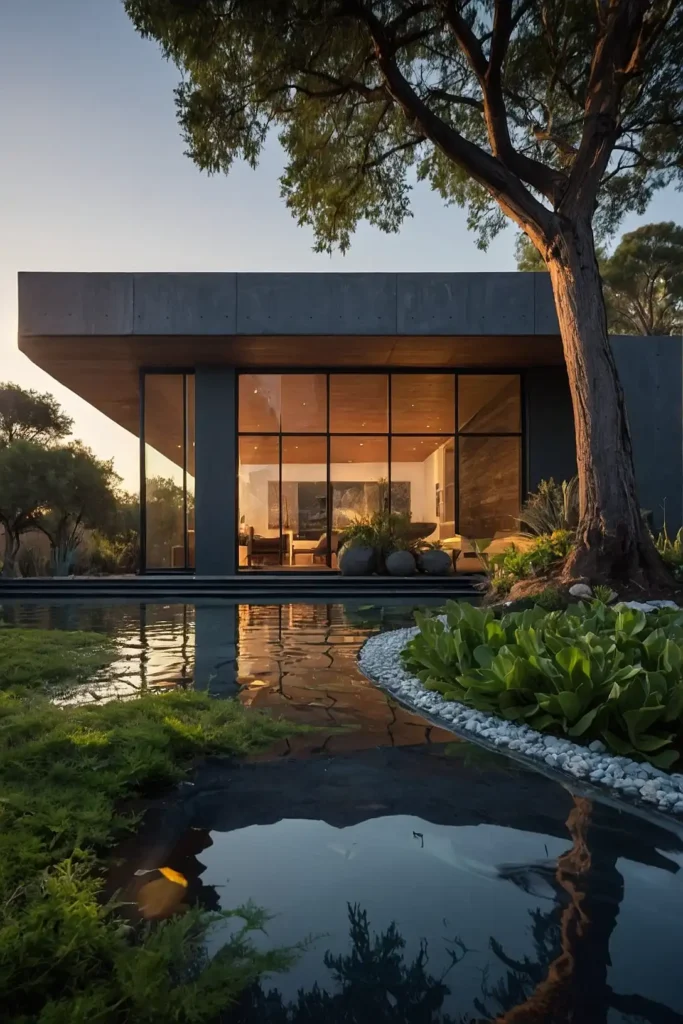
Install smart plumbing that directs used water from sinks, showers, and laundry to appropriate secondary uses.
These integrated systems manage water as a circular resource rather than a linear consumption.
Filter greywater through biological systems that remove soaps and impurities.
The cleaned water irrigates landscapes or supplies toilets, drastically reducing freshwater consumption.
This cyclical approach mirrors natural water systems while conserving precious resources.
13: Solar Chimneys For Cooling
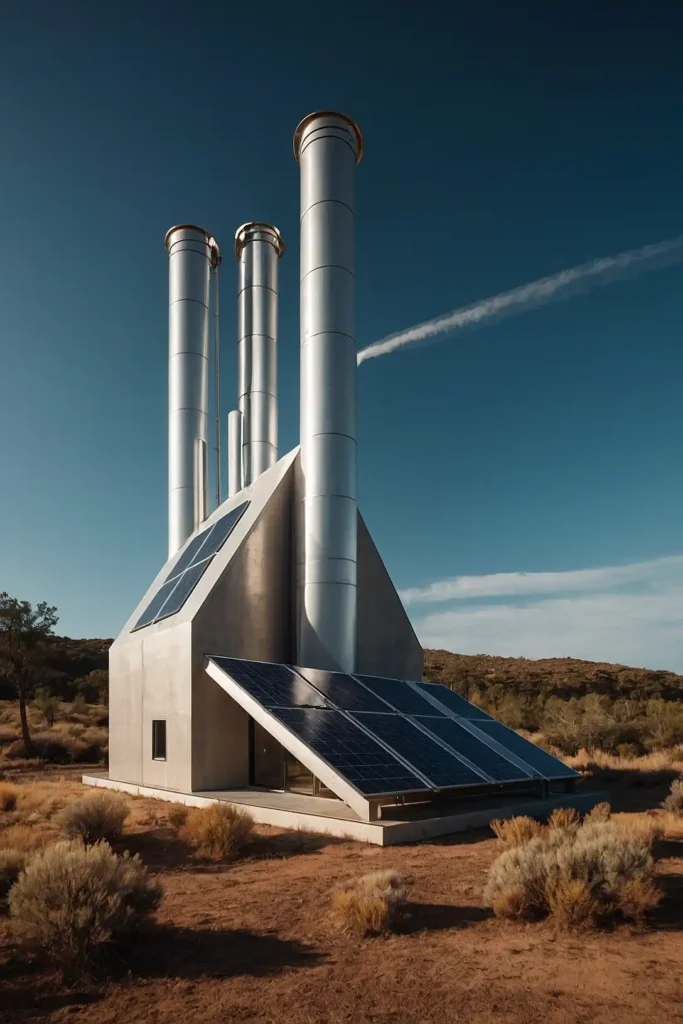
Incorporate tall, sun-warmed air channels that create natural ventilation through convection currents.
These passive cooling towers eliminate the need for mechanical air conditioning in many climates.
Design dark-colored, glass-faced vertical shafts on sun-exposed sides of your home.
The solar-heated air rises and draws cooler air through the building from carefully placed ground-level inlets.
This ancient technique reimagined with modern materials creates comfortable interior temperatures without energy consumption.
14: Modular Adaptable Rooms
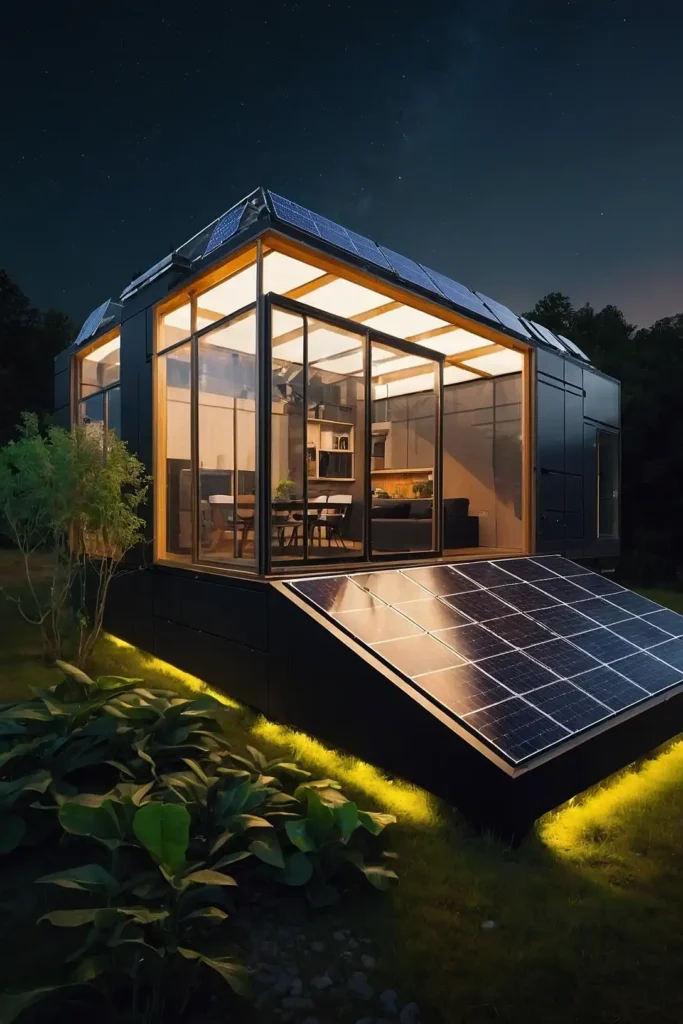
Design flexible living spaces with movable walls and multifunctional furniture that transform based on changing needs.
This adaptable approach accommodates life changes without requiring new construction.
Include track-mounted dividers and storage systems that reconfigure easily.
The versatile spaces serve different functions throughout the day or evolve as family structures change over years.
This responsive design extends building lifespans while reducing material consumption for renovations.
15: Urban Beekeeping Towers

Integrate specialized habitat structures for bees and pollinators into architectural elements of your home.
These dedicated spaces support crucial species while producing honey and enhancing garden productivity.
Design sculptural hive housings that protect colonies while making them visible features.
The intentional support for pollinators improves local food production while connecting residents to essential ecological processes.
This symbiotic relationship benefits both human and insect inhabitants of your property.
16: Living Machine Wastewater Treatment
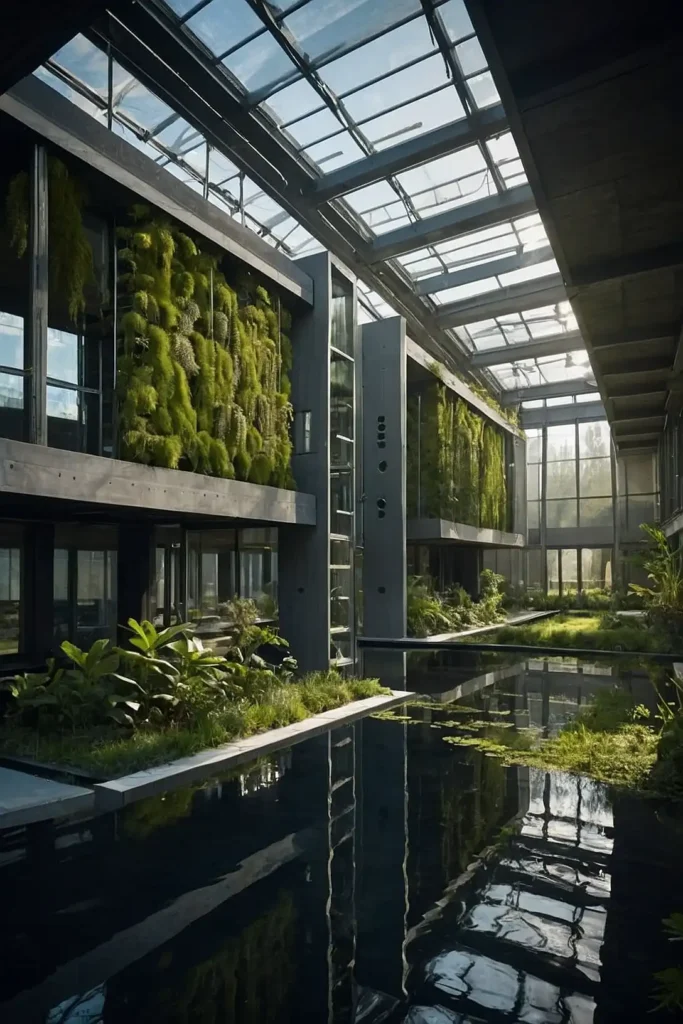
Process household wastewater through a series of engineered ecosystems that mimic natural purification.
These beautiful indoor or greenhouse systems transform waste into clean water through biological processes.
Guide water through sequential tanks containing specific plants, microorganisms, and small animals.
The living filtration creates a complete treatment system that produces clean water for reuse.
This visible infrastructure connects residents to water cycles while eliminating pollutant discharge.
17: Earth-ship-Inspired Thermal Mass
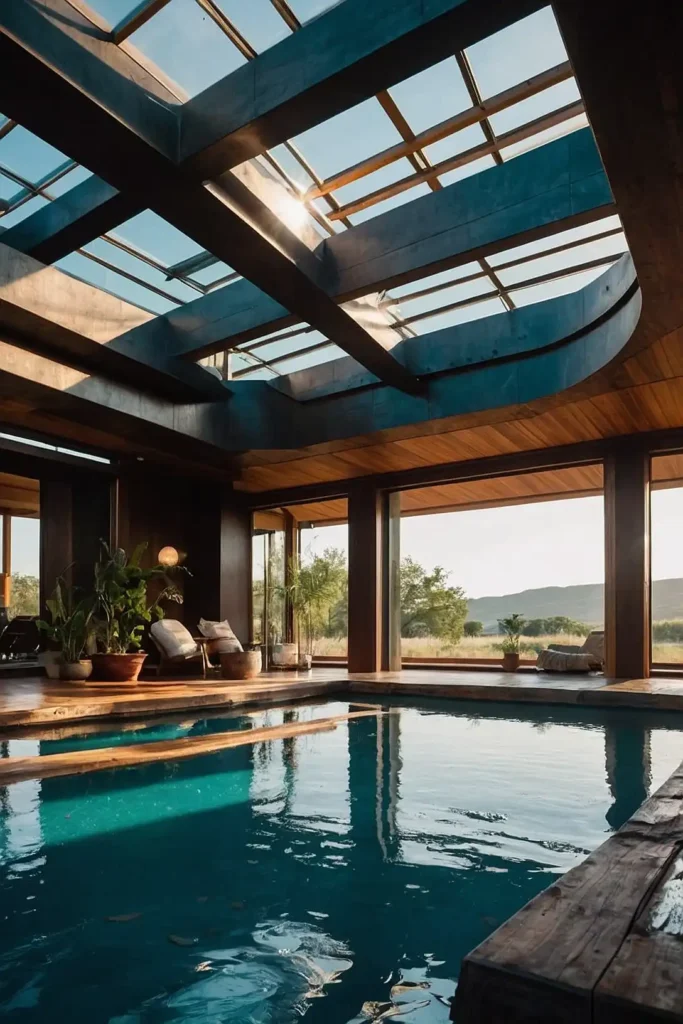
Incorporate thick walls of recycled materials like earth-packed tires or cans that absorb and slowly release heat.
These substantial thermal batteries stabilize interior temperatures despite exterior fluctuations.
Position these massive elements to capture direct sunlight during winter days.
The heat stored within the walls radiates slowly overnight, maintaining comfortable temperatures without active heating.
This passive system creates remarkably stable interior comfort with zero energy input.
18: Wind-Responsive Kinetic Façades
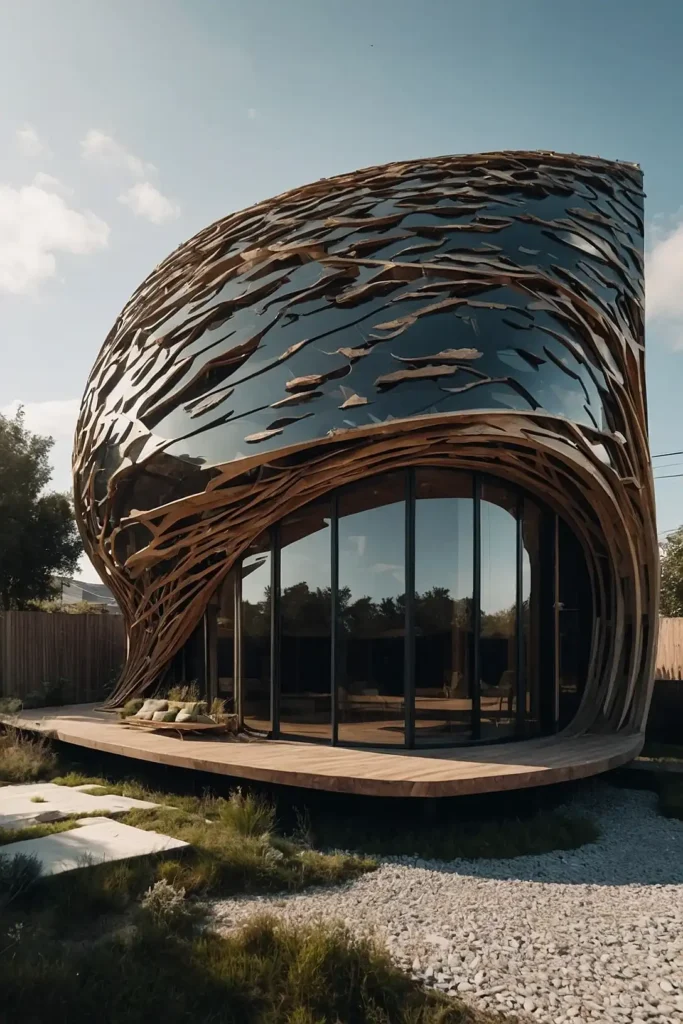
Install exterior elements that move in response to wind, generating power while creating ever-changing architectural expression.
These dynamic systems transform breeze into both energy and art. Use lightweight materials that respond to even gentle air movement.
The motion generates electricity through embedded piezoelectric components or small turbines while creating visual poetry.
This responsive architecture makes invisible natural forces visible through beautiful movement.
19: Aquaponic Indoor Food Systems

Create closed-loop systems where fish provide nutrients for plants while plants filter water for fish.
These symbiotic arrangements produce both protein and vegetables in a space-efficient cycle.
Circulate water from fish tanks through plant growing beds where bacteria convert waste to fertilizer.
The integrated ecosystem produces food year-round regardless of outdoor conditions.
This productive indoor feature connects residents directly to their food production while beautifying interior spaces.
20: Bamboo Structural Systems

Replace conventional framing with rapidly renewable bamboo that offers exceptional strength-to-weight ratio.
This sustainable alternative to wood or steel sequesters carbon while creating distinctive aesthetic appeal.
Use engineered bamboo products for consistent structural performance and durability.
The natural material creates striking architectural expressions while reducing environmental impact.
This regenerative approach supports sustainable forestry while creating structures of remarkable beauty and resilience.
21: Automated Food Forests

Enhance traditional permaculture with smart sensors and precision irrigation to maximize food production with minimal intervention.
These technologically assisted ecosystems blend digital efficiency with natural abundance.
Install soil moisture monitors and weather-responsive watering systems.
The integrated technology optimizes growing conditions while sending harvest alerts when fruits and vegetables reach peak ripeness.
This harmonious blend of nature and technology creates productive landscapes requiring minimal maintenance.
22: Translucent Structural Insulation
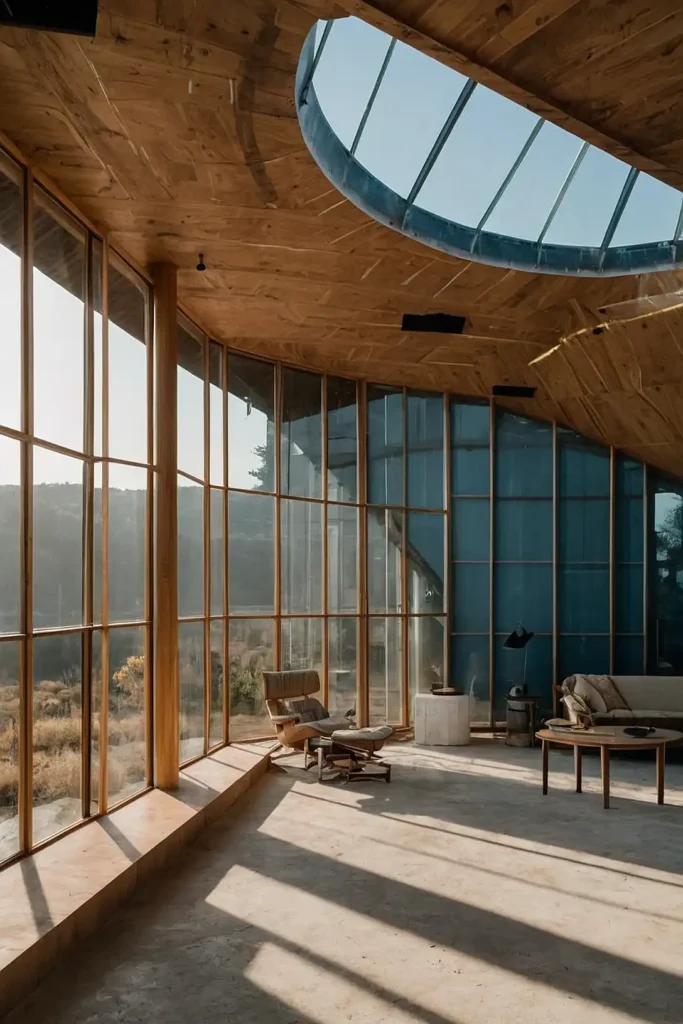
Install light-transmitting insulation panels that provide thermal protection while allowing diffused daylight into interior spaces.
These innovative materials eliminate the traditional tradeoff between insulation and natural light.
Use aerogel-filled polycarbonate panels in walls and roof sections.
The high-performance insulation maintains comfortable temperatures while dramatically reducing artificial lighting needs during daylight hours.
This multifunctional building envelope transforms energy efficiency from invisible to aesthetically striking.
23: Smart Microclimate Management
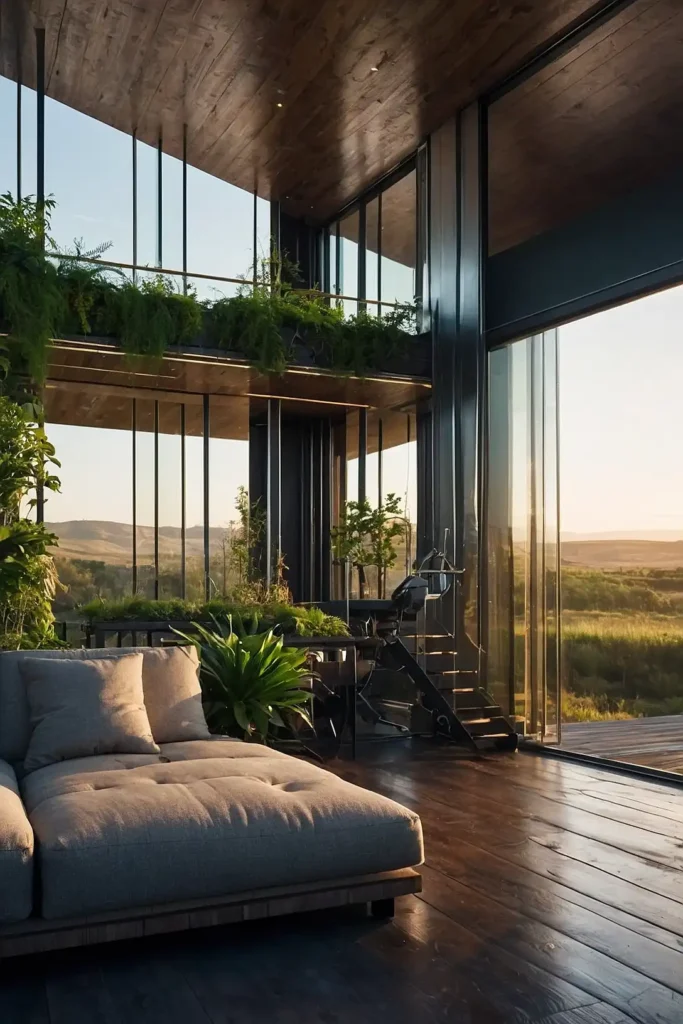
Deploy networks of sensors and automated systems that create optimal growing conditions in different areas of your property.
This technological approach maximizes successful cultivation of diverse species.
Install weather stations connected to targeted irrigation, shade deployment, and ventilation systems.
The responsive network creates protected microclimates that expand the range of what you can grow successfully.
This intelligent infrastructure extends growing seasons while minimizing resource inputs.
24: 3D Printed Earthen Structures
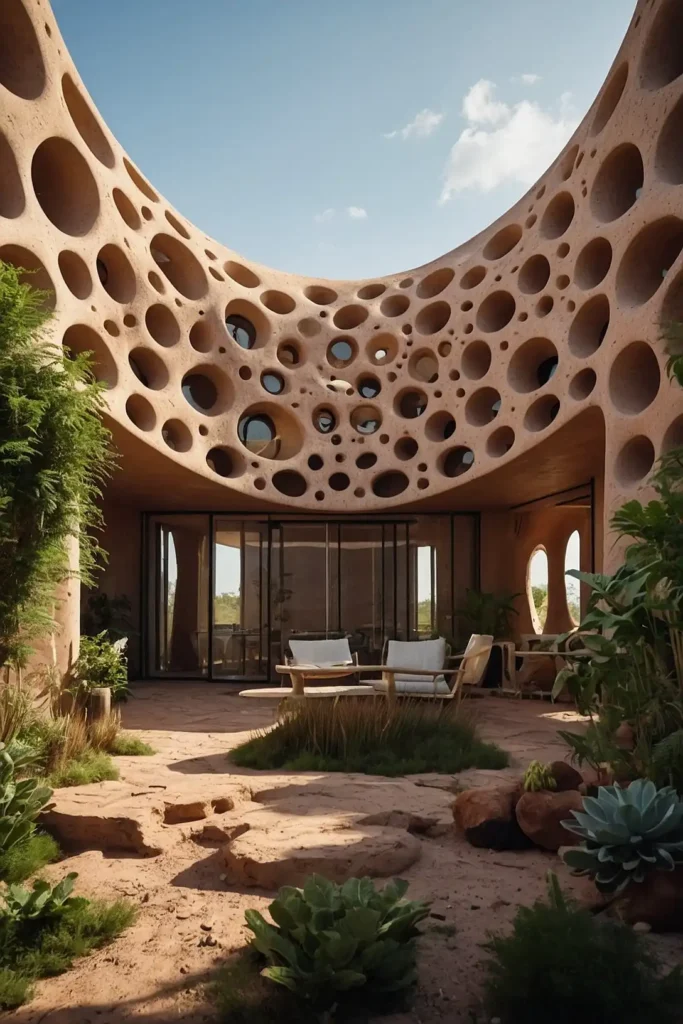
Construct buildings using large-scale printers that extrude local earth materials in precise, optimized patterns.
This emerging technology combines traditional materials with computational efficiency.
Design walls with complex internal geometries that maximize strength while minimizing material use.
The precision printing eliminates construction waste while allowing organic, nature-inspired forms difficult to achieve with conventional methods.
This revolutionary approach transforms humble soil into sophisticated architecture through advanced technology.
25: Bioluminescent Lighting Systems

Integrate light-emitting organisms and bio-inspired technologies that provide gentle illumination without electricity.
These living light sources create magical nighttime ambiance with minimal environmental impact.
Cultivate bioluminescent mushrooms in specially designed display niches.
Complement with lighting that mimics natural processes using minimal energy, such as phot luminescent materials that store and release light.
This enchanting approach reconnects lighting to natural processes while reducing energy consumption.
26: Personal Rapid Transit Connections

Design homes with integrated access points to suspended transit pods that move efficiently between community nodes.
This networked transportation eliminates the need for individual car ownership.
Include docking stations that connect directly to home entrances for weather-protected transfers.
The elevated guide-ways support solar-powered vehicles while preserving ground level for human and wildlife use.
This reimagined infrastructure promotes car-free living through convenient, energy-positive alternatives.
27: Drawdown Materials Selection

Construct using materials that actively sequester more carbon than they emit during production and transportation.
This regenerative approach transforms buildings into climate change solutions.
Choose rapidly renewable biogases materials like bamboo, hemp, and mycelium products.
Complement with reclaimed elements that extend the lifecycle of existing materials without new manufacturing impacts.
This thoughtful materials strategy turns construction into an active climate healing process.
28: Wildlife Corridor Integration
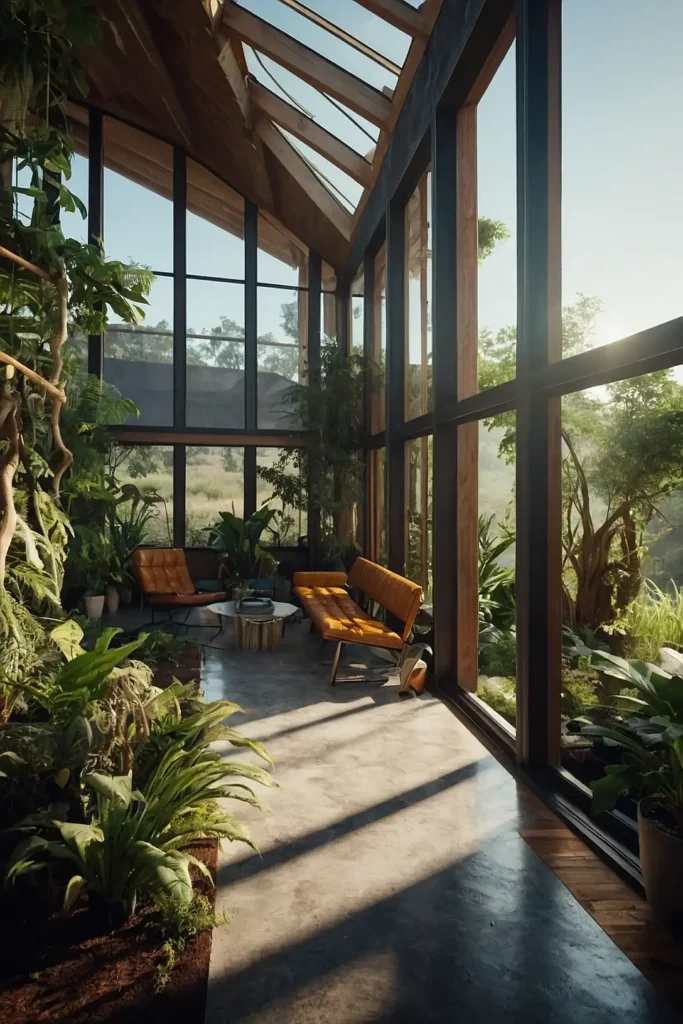
Design your property as part of intentional pathways that enable animal movement through developed areas.
These connected habitats support biodiversity while bringing nature into daily experience.
Incorporate native plantings, water sources, and protective cover for various species.
Create small wildlife tunnels under fences and roads to facilitate safe passage between fragmented habitats.
This ecological approach recognizes human homes as part of larger wildlife communities.
29: Air-Purifying Living Walls
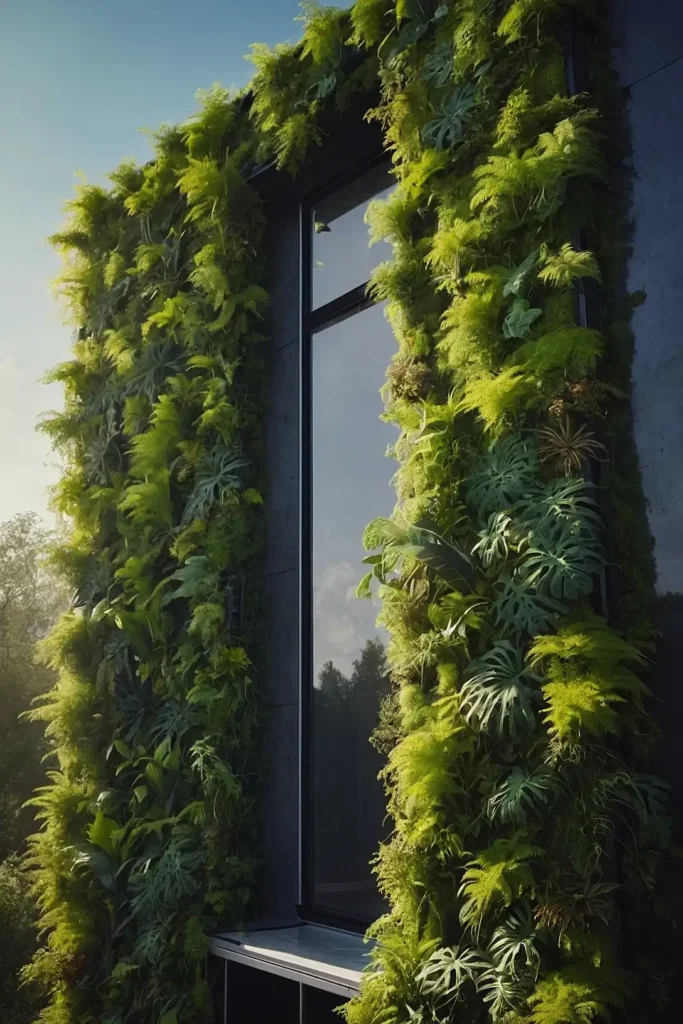
Install densely planted interior walls specifically designed to filter and improve indoor air quality.
These vertical gardens integrate both beautiful aesthetics and respiratory health benefits.
Select species particularly efficient at removing common toxins and producing oxygen.
The active biofiltration reduces the need for mechanical air purification while creating stunning living art.
This multifunctional feature transforms air quality from invisible concern to visible solution.
30: Circular Material Flows
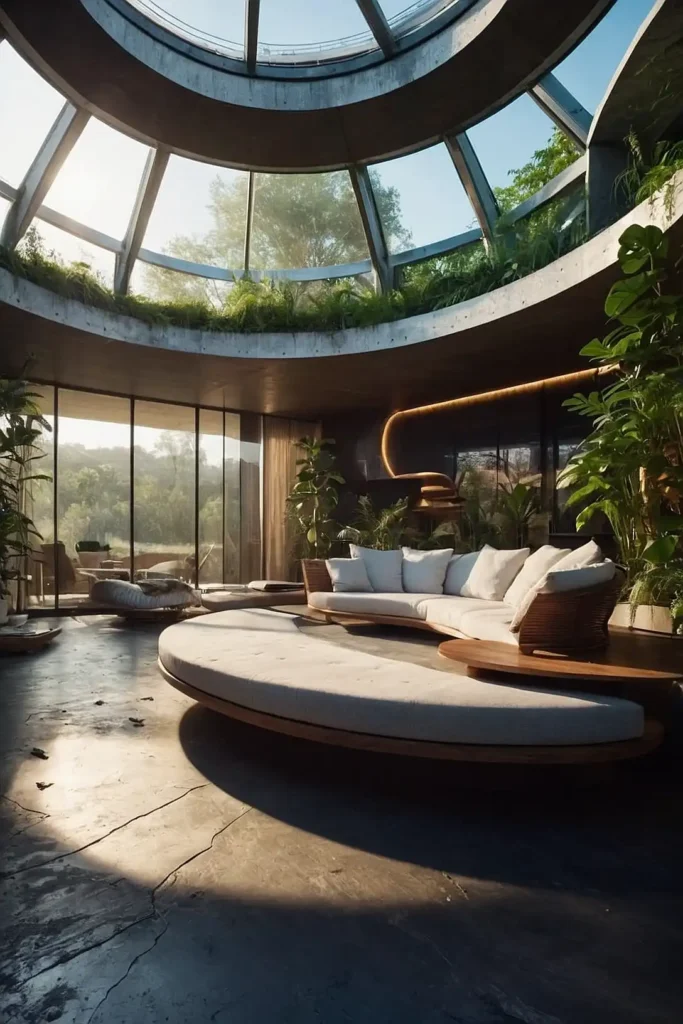
Design buildings with components that can be easily disassembled and reused at the end of their initial purpose.
This forward-thinking approach eliminates the concept of waste in construction.
Use mechanical fasteners instead of adhesives to allow future separation.
Select durable materials with multiple potential lifecycles and documented composition for future remanufacturing.
This circular approach treats buildings as material banks rather than temporary assemblies.
31: Food-Producing Solar Trellises
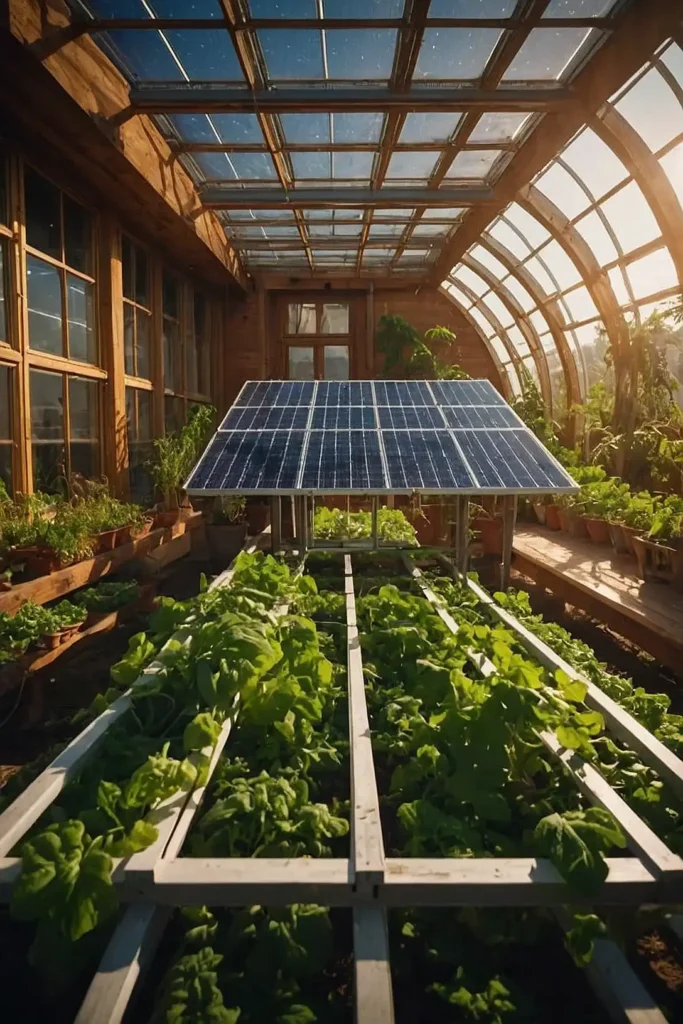
Construct dual-purpose structures that generate electricity above while growing food below.
These clever systems maximize every square foot by stacking complementary functions.
Mount bifacial solar panels that allow filtered light to reach plants growing underneath.
The partial shade creates ideal conditions for many food plants while the elevated panels operate at higher efficiency thanks to cooler temperatures.
This integrated approach reconciles competing needs for food and energy production.
32: Biomimetic Structural Optimization
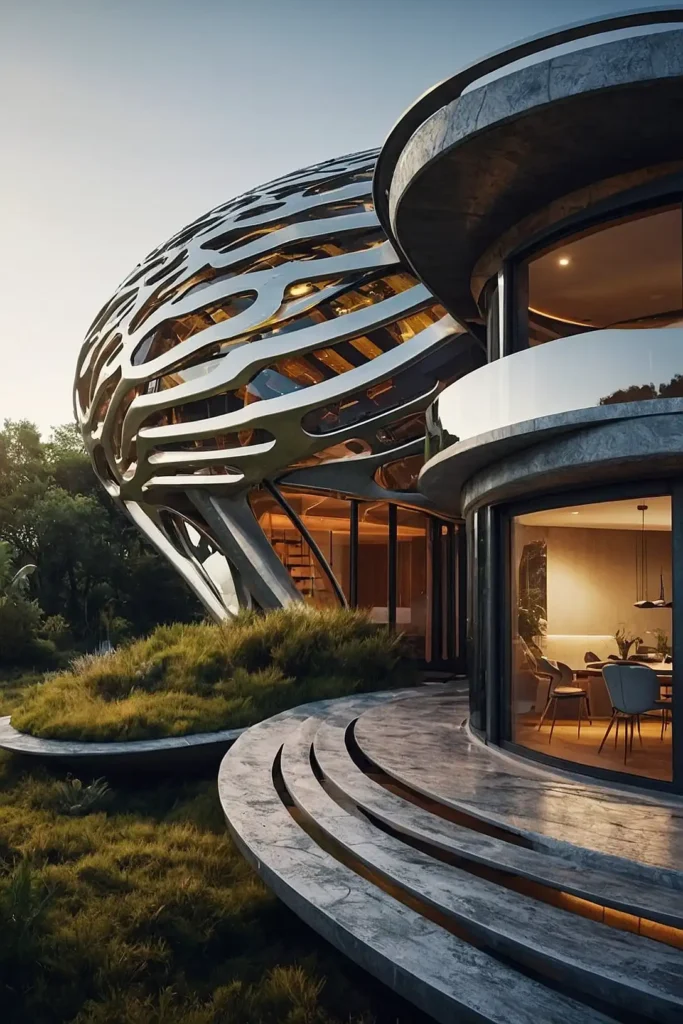
Shape building elements using algorithms inspired by natural growth patterns to maximize strength while minimizing material.
These computer-generated forms often resemble tree branches or bone structures.
Apply topology optimization software to identify where material is truly needed for structural integrity.
The resulting organic forms eliminate unnecessary mass while creating visually stunning architectural expressions.
This nature-inspired computational approach achieves unprecedented efficiency through digital evolution.
33: Fog-Harvesting Façades
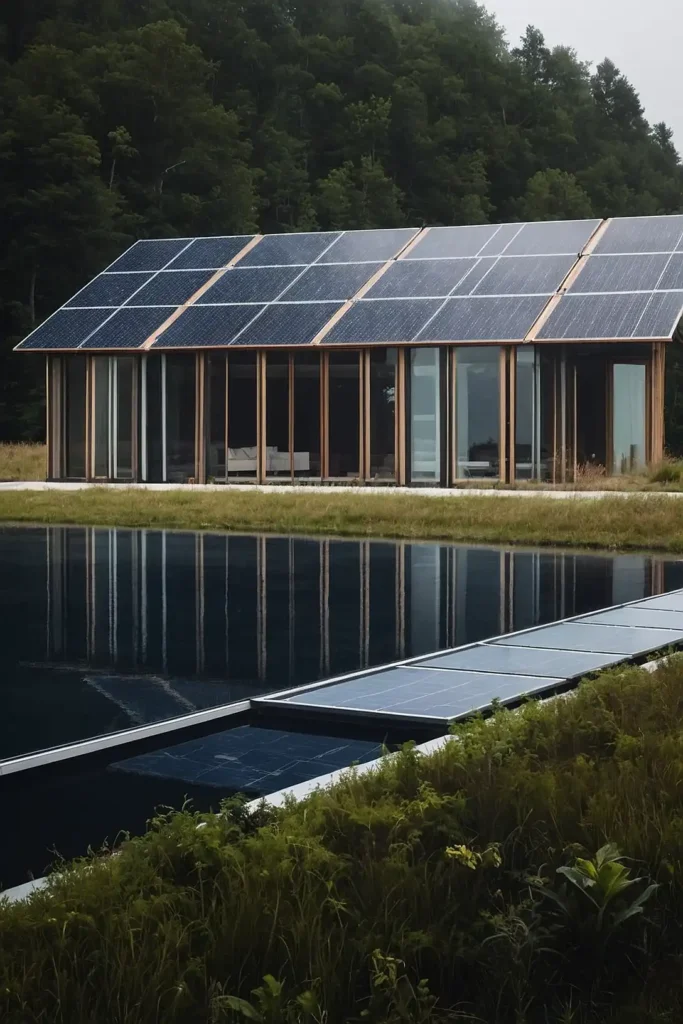
Install specialized mesh panels that capture moisture from humid air in water-scarce regions.
These passive collection systems extract water from thin air without energy inputs.
Design architectural features that funnel air movement across collection surfaces.
The harvested water supplements other sources for irrigation or household use after appropriate filtration.
This atmospheric water generation mimics adaptations found in desert plants and animals.
34: Seed-Embedding Building Materials
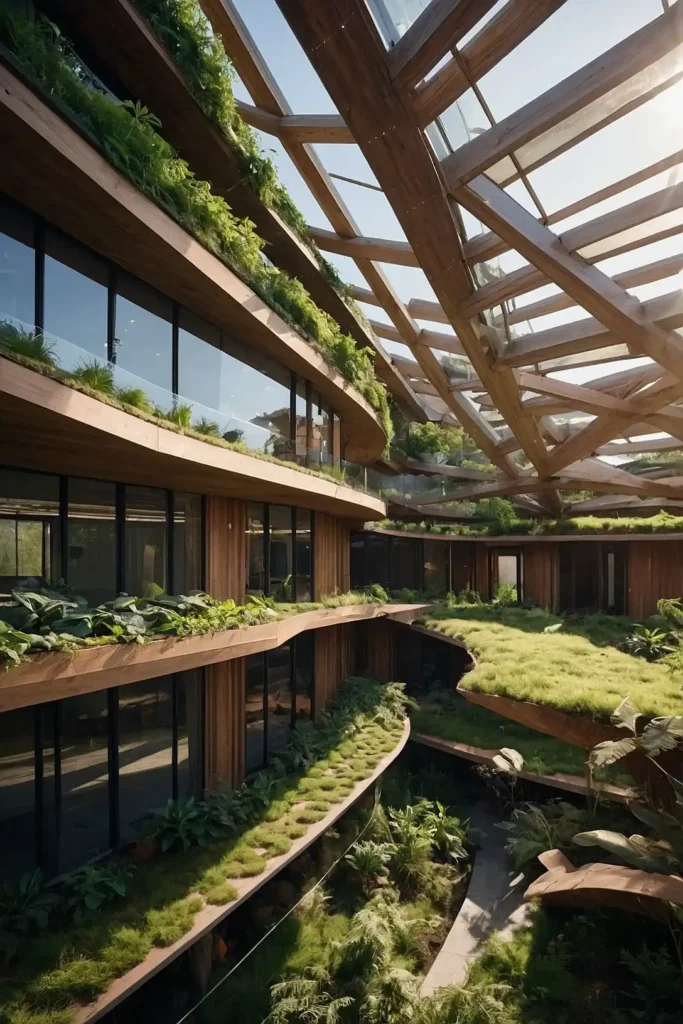
Incorporate native plant seeds into exterior surface materials that gradually release to regenerate landscapes.
These living building skins launch ecological succession over time.
Add seeds to mulch layers, green roof substrates, or specially designed decomposing façade elements.
The embedded regeneration strategy transitions from architecture to ecosystem as materials weather.
This temporal design approach embraces natural change processes rather than fighting against them.
35: Community Energy Microgrids
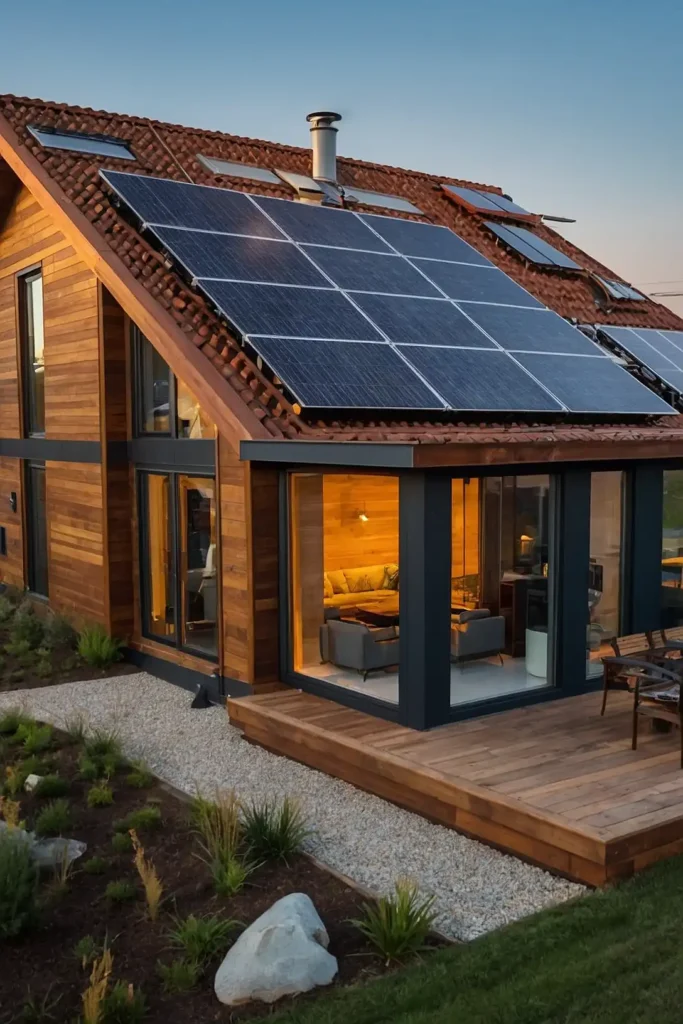
Connect homes through neighborhood-scale smart grids that share locally produced renewable energy.
These resilient networks balance production and demand across multiple buildings.
Install battery storage, solar arrays, and small wind generation with intelligent controls.
The distributed system provides energy independence while maintaining reliability through cooperative resource sharing.
This collaborative approach transforms energy from individual commodity to community-managed resource.
Conclusion
Solar-punk homes reimagine our relationship with both technology and nature, creating living spaces that regenerate rather than deplete our world.
By adopting these ideas selectively, you can transform your home into a beautiful node within interconnected systems of ecological and social renewal.




